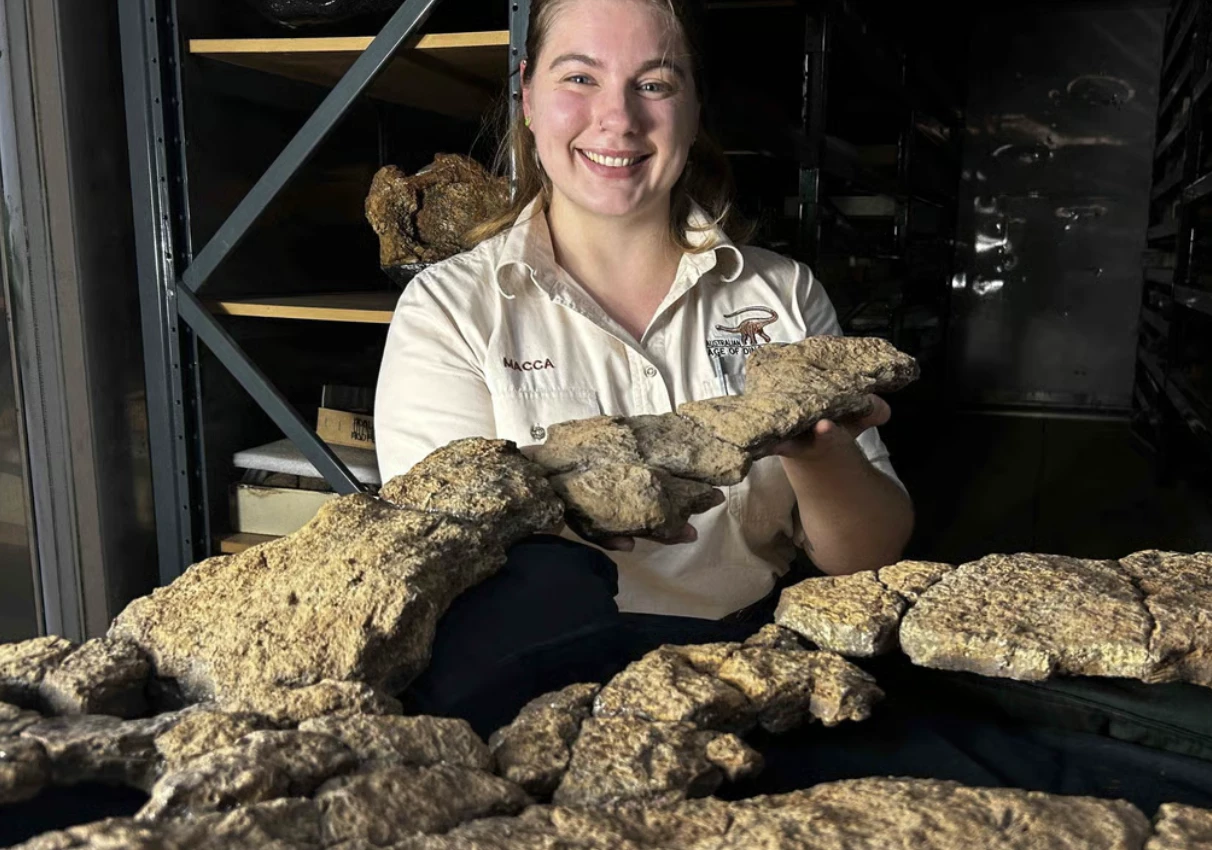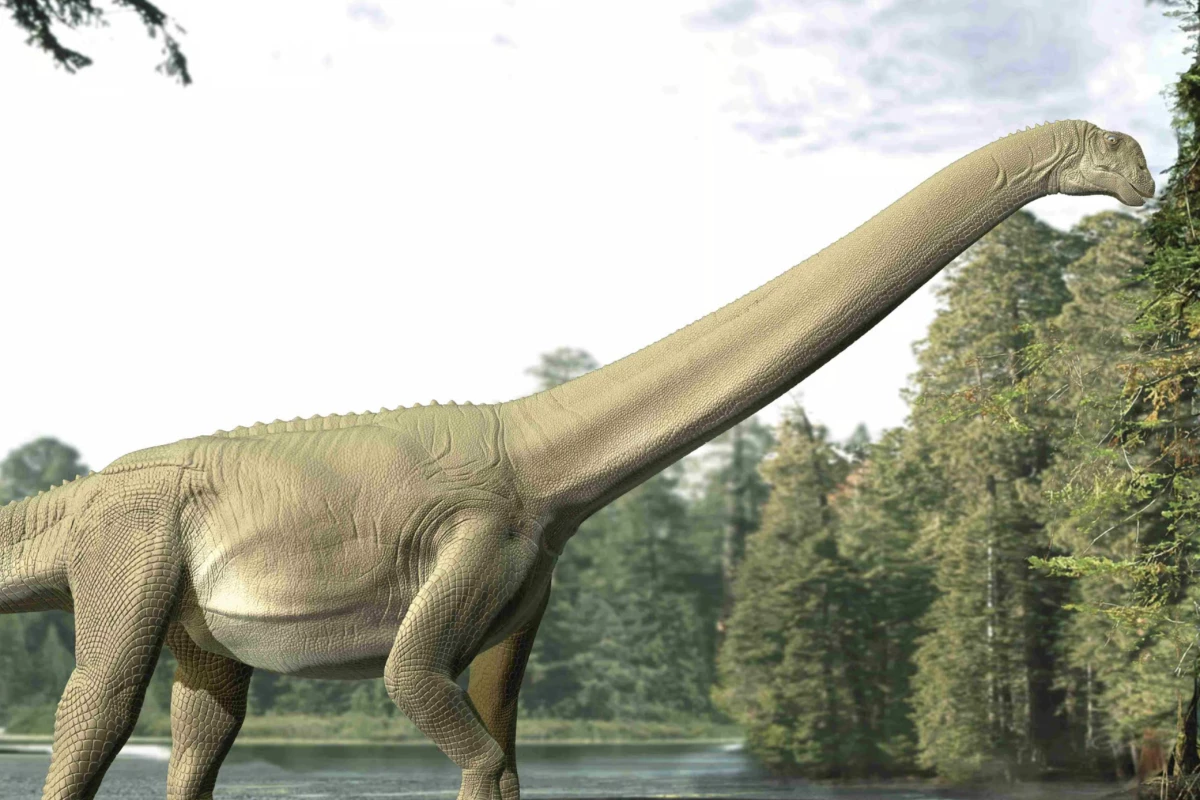For the first time, scientists have pieced together the diverse diet of the sauropod Diamantinasaurus, using advanced technology to assess the fossilized stomach contents that make up the dinosaur's last meal, which took place around 95 million years ago.
Researchers from Australia's Curtin University have used micro-computed tomography (micro-CT) and synchrotron scanning, neutron tomography, geochemical and mineral analyses, and X-ray diffraction to determine just what the young Australian sauropod Diamantinasaurus matildae – known as Judy – had eaten before death. Importantly, their findings not only confirm that these dinosaurs were indeed herbivores, but also offer unprecedented detail into the feeding habits of these giants.
“Ever since the late 19th century, paleontologists have firmly regarded sauropods as herbivores," said Curtin's Stephen Poropat. "However, the specific plants that they ate, and the height above ground at which they fed, have remained unknown – until now,”
Judy, who measured 12 meters (39 ft) from head to tail, was unearthed in the Australian state of Queensland in 2017. Accompanying the skeleton was a well-preserved cololite – its fossilized stomach contents – allowing scientists, for the first time, to work out just what was on the sauropod menu.
“Our findings show that at least some species of subadult sauropods were able to feed at a variety of heights above ground and easily adapt to the various climatic, environmental, and vegetation changes throughout the Jurassic and Cretaceous periods," said Poropat. “We also confirmed that sauropods were bulk-feeders – a method still used by herbivorous reptiles and birds today. This means they would not have chewed their food, instead swallowing it whole and letting their digestive system do the rest of the work. Any given meal would likely have resided in their digestive tract for up to two weeks before waste from that meal was excreted.”
Using mineral and molecular analyses, chemical markers linked to conifers (cone-bearing plants), angiosperms (flowering plants) and seed-fern fruiting bodies were found in Judy's stomach, revealing the dinosaurs had a generalist plant-based diet, with the animals feeding on foliage both close to the ground and at high levels. Essentially, sauropods were prehistoric foodies.
Not surprisingly, given that these dinosaurs weren't big on chewing their food before swallowing, biomarkers revealed that Judy sought out young plant growth, which wouldn't have been as tough and hard to digest as older vegetation.
“By using advanced organic geochemical techniques, we were able to confirm the presence of both angiosperms and gymnosperms in the diet of this sauropod," said Kliti Grice, a professor at Curtin. "This unique approach was what provided molecular evidence of the plants that sauropods consumed."
Previous clues, such as their elongated necks and the numerous small and slender teeth housed in the sauropod mouth, suggested to scientists that these animals were herbivorous and most likely enjoyed a wide variety of vegetation, but the extent of what and how they ate had remained hypothetical. Now, this new knowledge of the broad diet of Diamantinasaurus species supports fossil evidence that they were one of the most successful and adaptable dinosaurs on Earth.

"The presence of conifer bracts in the cololite confirms that these plants were an attractive food source for, and supports high-level browsing in, at least some sauropod taxa," the researchers noted in their study. "The angiosperms in the cololite imply that Diamantinasaurus was able to relatively rapidly adapt to exploit novel plant taxa in its environment. Perhaps most important, however, is the fact that this cololite demonstrates indiscriminate bulk feeding for at least some sauropod taxa. This strategy evidently served sauropods well for 130 million years and might have been one of the underpinnings of their success and longevity as a clade."
While we can't say if Judy, a subadult individual, had the same diet as mature sauropods, this study can confirm that these species weren't afraid of trying new things – evolutionarily speaking. Ferns and conifers have dotted the planet for 300 million years or more, but flowering plants have only been around for half that time and predate Diamantinasaurus species by an estimated 40 million years. So it's no surprise that sauropods were one of the most successful dinosaurs to have lived, dominating the landscape for around 135 million years.
The study was published in the journal Current Biology.
Source: Curtin University





